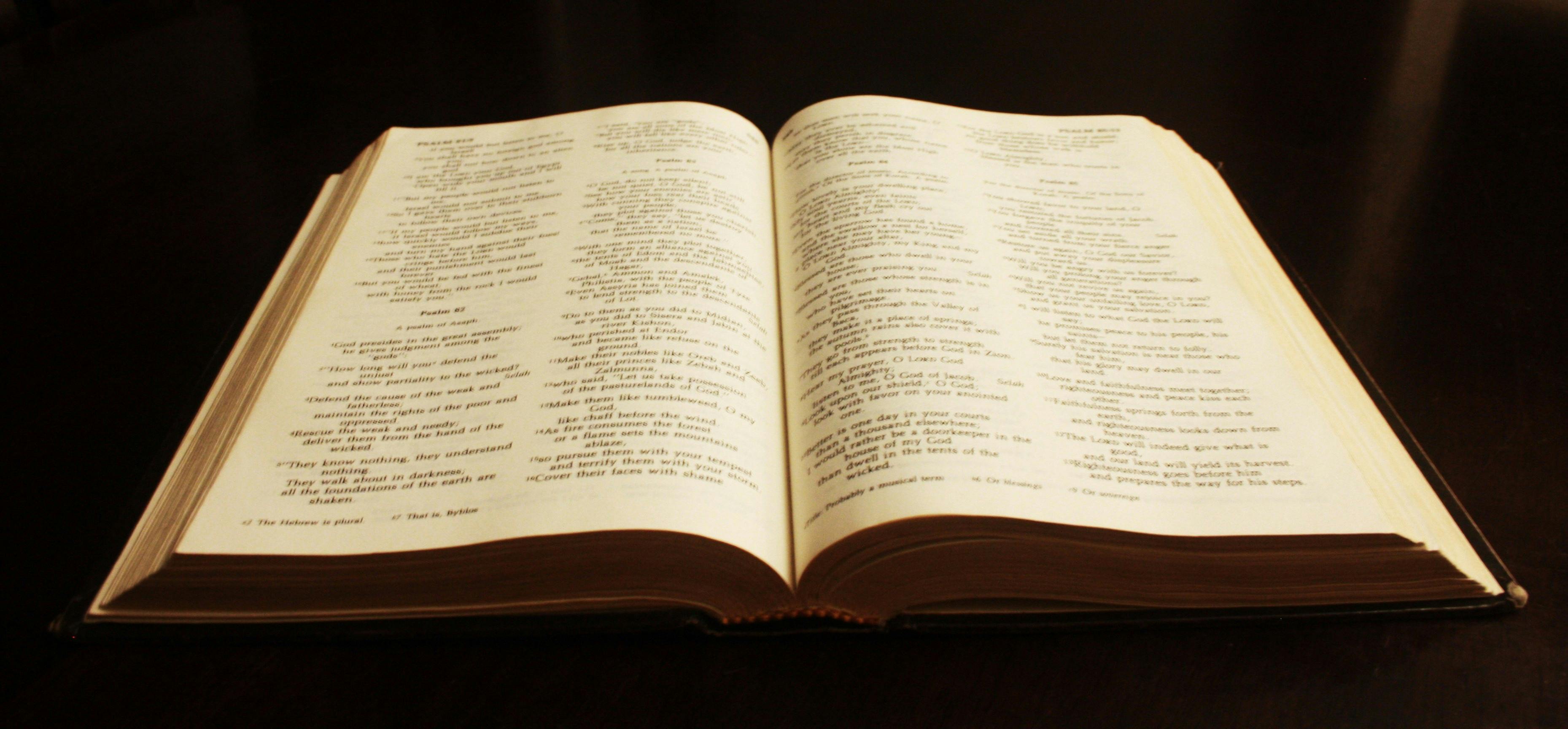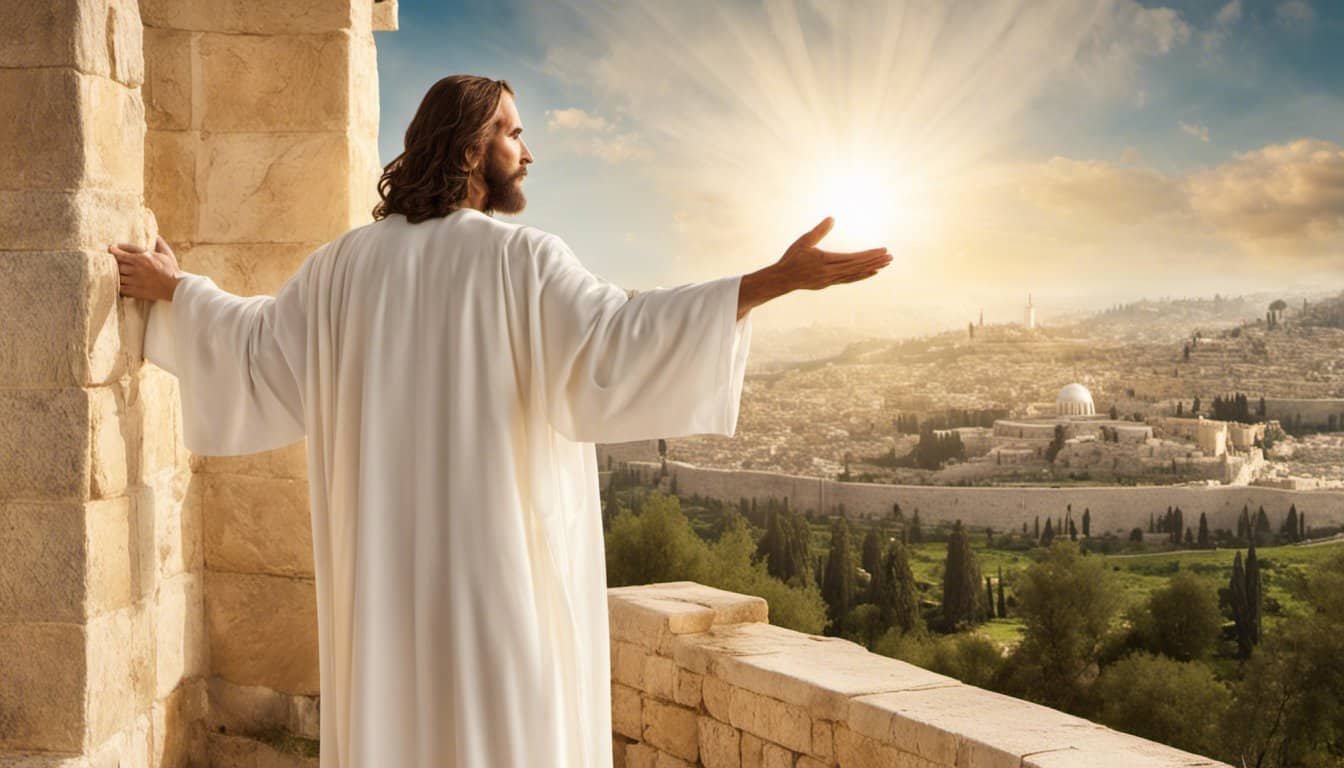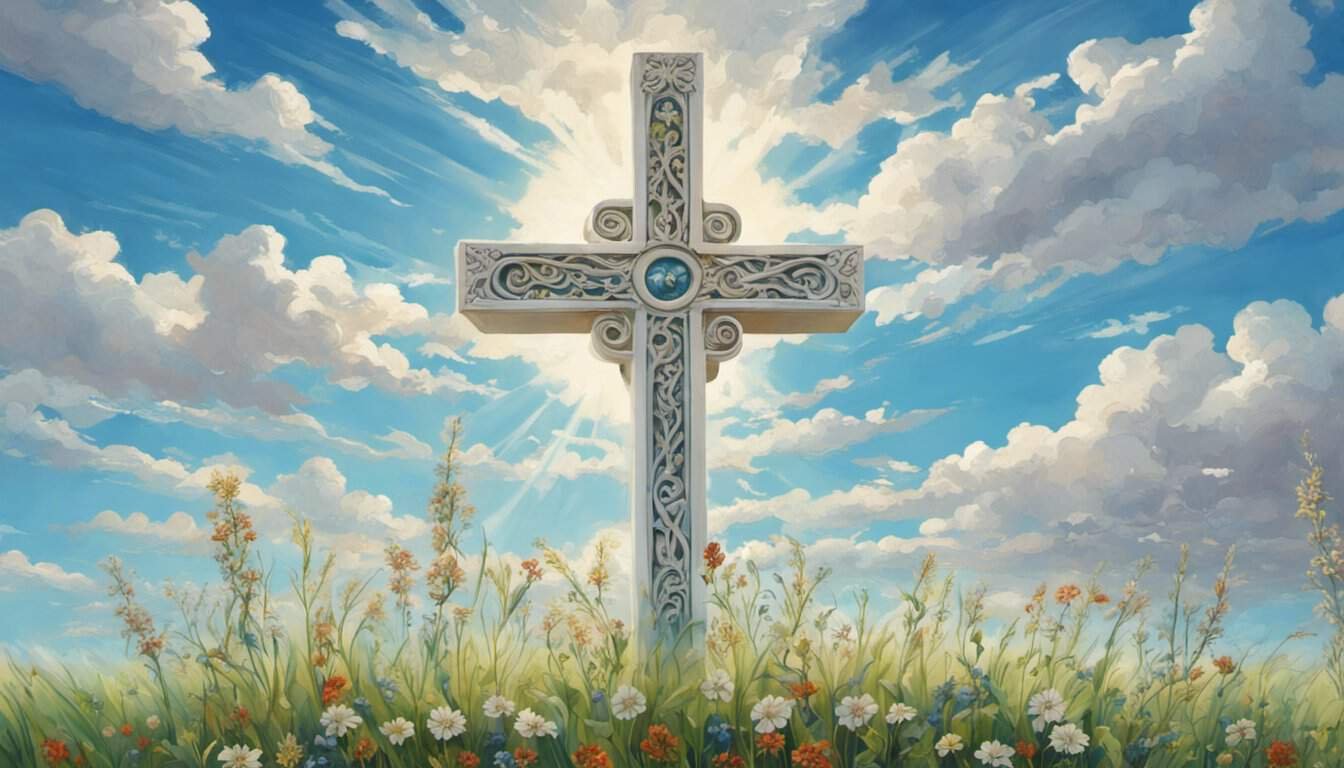The parable of the prodigal son is a beloved story from the Bible that teaches us about love, forgiveness, and redemption. Found in the Gospel of Luke, this tale has touched hearts for centuries. The truth behind the parable of the prodigal son is that God’s love and forgiveness are always available to those who seek it, no matter how far they have strayed.


Jesus told this story to show how much God cares for all His children. It’s about a young man who asks for his inheritance early, leaves home, and wastes all his money.
When he has nothing left, he decides to go back to his father and beg for forgiveness. To his surprise, his father welcomes him with open arms and throws a big party to celebrate his return.

This parable reminds us that God’s love is unconditional. Just like the father in the story, God is always ready to forgive us when we make mistakes. The story also shows us the power of saying sorry and making things right when we’ve done wrong.
Key Takeaways
- The parable teaches about God’s endless love and forgiveness for all people
- It shows the importance of admitting mistakes and asking for forgiveness
- The story reminds us to be grateful for God’s blessings and to use them wisely
Background of the Parable
The parable of the prodigal son is set in ancient Jewish culture. It was told by Jesus to teach about God’s love and forgiveness. The story resonated with different groups who heard it.
Context Within the Gospel of Luke
The parable of the prodigal son is found in Luke 15:11-32. It’s part of a series of parables Jesus tells about lost things being found.
Before this story, Jesus shares parables about a lost sheep and a lost coin. These lead up to the prodigal son story.
Luke’s gospel often focuses on Jesus’ teachings about God’s love and mercy. This parable fits that theme perfectly.
Historical and Cultural Setting
The story takes place in a Jewish family setting. In that culture, inheritance was very important.
Asking for inheritance early was seen as disrespectful. It was like wishing your father was dead.
Pigs were considered unclean animals to Jews. The son working with pigs shows how low he had fallen.
The father running to greet his son was unusual. Dignified men didn’t run in that culture.
The Audience and Their Response

Jesus told this story to a mixed crowd. His listeners included tax collectors, sinners, Pharisees, and scribes.
The tax collectors and sinners likely felt hope from the story. It showed God welcomes back those who’ve strayed.
The Pharisees and scribes might have been upset. They often looked down on “sinners” and didn’t like how Jesus welcomed them.
Some listeners probably saw themselves in the story. They may have felt like the younger son, the older son, or even the father.
The Parable Narration
The parable of the prodigal son tells a story of rebellion, regret, and redemption. It follows a young man’s journey from his father’s house to a distant land and back again.
The Younger Son’s Departure
« Powerful Bible Verses for Deepening Your Daily Devotion: Inspiring Words to Boost Your Faith
What Does the Bible Say About Fornication: A Friendly Guide to Understanding Scripture’s Perspective »
The tale begins with a younger son asking his father for his share of the inheritance. This request was unusual and disrespectful, as inheritances were typically given after a parent’s death. The father, showing great love, grants his son’s wish.
With his newfound wealth, the young man sets off to a far country. He’s eager to experience life away from home and explore the world on his own terms.
The son’s actions show his desire for independence and immediate gratification. He doesn’t consider the consequences of his choices or the pain he might cause his family.
Living in Rebellion
In the distant land, the younger son lives it up. He spends his money freely on wild parties and wasteful living. The Bible doesn’t give specific details, but we can imagine a life of excess and poor choices.

This period of rebellion might have seemed fun at first. The son likely felt free and happy, enjoying his newfound independence. But his reckless behavior had a price.
Soon, the young man’s money runs out. He’s spent everything his father gave him. With empty pockets, he finds himself alone and without resources in a foreign land.
The Famine and Desperation
As if things weren’t bad enough, a severe famine hits the land. Food becomes scarce, and prices skyrocket. The once-wealthy son now faces true hardship.
Desperate for food, he takes a job feeding pigs. For a Jewish man, this was rock bottom – pigs were considered unclean animals. He’s so hungry that even the pig food looks good to him.
In this low point, the son “comes to his senses“. He realizes how foolish he’s been and remembers the good life he left behind. Even his father’s servants have it better than him now.
The Return Home

The son decides to return to his father. He plans to confess his sins and ask to be treated as a servant. He doesn’t expect to be welcomed as a son again.
As he approaches home, his father sees him from afar. Filled with compassion, the father runs to meet his son. This was unusual for a dignified older man in that culture.
The father doesn’t wait for an apology. He hugs and kisses his son, then calls for a celebration. He gives the son a robe, ring, and sandals – symbols of restored status in the family.
The father’s joyful response shows his deep love and forgiveness. He’s overjoyed that his lost son has returned home safe and sound.
Interpreting the Characters

The characters in the parable of the prodigal son show different sides of human nature. They teach us about love, forgiveness, and family ties.
The Younger Son’s Transformation
The younger son, also known as the prodigal son, starts off selfish and reckless. He asks for his inheritance early and leaves home. He spends all his money on wild living.
When he runs out of cash, he ends up working with pigs. This job would have been seen as very dirty for a Jewish person. It shows how low he has fallen.
The son then has a change of heart. He realizes his mistakes and decides to go back home. He plans to ask his father for a job as a servant. This shows his humility and willingness to change.
The Father’s Unconditional Love
The father in the story shows amazing love and forgiveness. He doesn’t get mad at his son for leaving or wasting money. Instead, he waits and hopes for his return.

When he sees his son coming back, the father runs to meet him. This was not normal for important men in that culture. It shows how much he cares.
The father throws a big party to welcome his son home. He gives him new clothes and a ring. These gifts show that he fully accepts his son back into the family.
The Older Son’s Anger and Self-Righteousness
The older brother gets upset when his father welcomes the younger son back. He feels it’s not fair. He has worked hard all along and never got a party.
This son shows anger and self-righteousness. He can’t understand why his father is so happy. He refuses to join the celebration.
The father tries to explain his love for both sons. He wants the older son to share in the joy. This part of the story reminds us not to be jealous or judgmental.
Thematic Analysis

The parable of the prodigal son explores deep themes about God’s love and human nature. It shows how forgiveness can mend broken relationships and transform lives.
Forgiveness and Reconciliation
The father’s unconditional love and forgiveness stand out in this parable. He runs to embrace his wayward son, not waiting for an apology. This act shows true reconciliation.
The son’s return home represents repentance. He admits his faults and seeks to make amends. His father’s warm welcome demonstrates the power of forgiveness to restore relationships.
This theme reminds us that God always welcomes back those who turn to Him. It encourages people to forgive others, just as they hope to be forgiven.
Mercy and Grace

The father shows incredible mercy by accepting his son back without punishment. He even celebrates the son’s return with a feast.
This mercy goes beyond what the son deserves. It’s a picture of God’s grace – His unearned favor toward people.
The father gives his son a robe, ring, and sandals. These gifts symbolize full restoration to the family. They show how God’s grace doesn’t just forgive, but fully restores.
Legalism Versus Love
The older brother’s reaction highlights the contrast between legalism and love. He focuses on rules and fairness, angry that his wayward brother gets a party.
The father gently reminds him that love is more important than rules. He invites the older son to join the celebration, showing there’s room for both brothers in his heart.

This part of the story warns against a self-righteous attitude. It reminds us that God’s love extends to all, not just those who follow rules perfectly.
The Concept of Being Lost and Found
The parable uses the idea of being lost and found to show God’s joy when someone turns back to Him. The father says his son “was dead and is alive again; he was lost and is found.”
This theme connects to other parables Jesus told about a lost sheep and lost coin. In each story, there’s great joy when what was lost is found.
The concept applies to spiritual “lostness” – being far from God. It shows how valuable each person is to God, and how He seeks to bring them back.
Lessons and Applications

The parable of the prodigal son offers deep insights into human nature and God’s love. It teaches us about personal growth, divine mercy, and family relationships.
Personal Reflection and Repentance
The story encourages us to look at our own lives. Like the younger son, we sometimes make bad choices. We might waste our talents or hurt people we care about. The good news is that it’s never too late to change.
The prodigal son’s return home shows the power of admitting mistakes. When he realized his errors, he decided to go back to his father. This teaches us that repentance is the first step towards healing.
We can learn to:
- Recognize our faults
- Take responsibility for our actions
- Seek forgiveness
- Make positive changes
Understanding God’s Nature
The father in the story represents God’s loving character. He doesn’t wait for his son to earn forgiveness. Instead, he runs to meet him with open arms.
This parable reveals God’s:
- Endless love
- Willingness to forgive
- Joy in welcoming back sinners
God’s love isn’t based on our good deeds. He loves us even when we mess up. The father’s reaction teaches us that God offers hope and redemption to everyone who turns back to Him.
Relationships and Restoration
The story also shows how relationships can be mended. The younger son’s return home led to a joyful reunion. This teaches us about the possibility of healing broken bonds.
Key points about restoration:
- It requires humility from both sides
- Forgiveness plays a crucial role
- Celebration is part of the process
The older brother’s reaction reminds us to avoid jealousy and resentment. His attitude shows how these feelings can damage relationships. Instead, we should rejoice when others find their way back home.
Contemporary Relevance
The parable of the prodigal son still speaks to people today. It teaches about forgiveness, love, and second chances in ways that connect with modern life.
The Parable in Modern Society
This Bible story reflects real family issues we see now. Kids leave home and make big mistakes. Parents struggle to forgive. The tale shows how to heal broken relationships.
Many people today can relate to feeling lost or wanting a fresh start. The prodigal son’s journey home reminds us it’s never too late to change.
Redemption stories still inspire hope. When someone turns their life around, it’s a cause for joy. The father’s welcome in the parable shows the power of forgiveness and love.
Role of the Parable in Christian Theology
This story is key in Christian teaching about God’s love. It shows God as a caring father who celebrates when lost children return.
The parable highlights:
- God’s endless compassion
- Joy of repentance
- Importance of forgiveness
Churches use this tale to explain grace. It teaches that God’s love is freely given, not earned. This idea is central to the Gospel message.
The story also warns against being judgmental like the older brother. It encourages Christians to welcome those seeking to make amends.
Influence on Literature and Art
The prodigal son story has inspired countless works of art and literature. Famous paintings like Rembrandt’s “Return of the Prodigal Son” bring the tale to life.
Many books and movies use this plot. A character leaves home, faces hardship, then returns to find forgiveness. It’s a timeless theme that resonates across cultures.
Writers often put a modern spin on the parable. They might set it in today’s world or change details to explore new angles. These fresh takes help people see the story’s wisdom in new ways.















